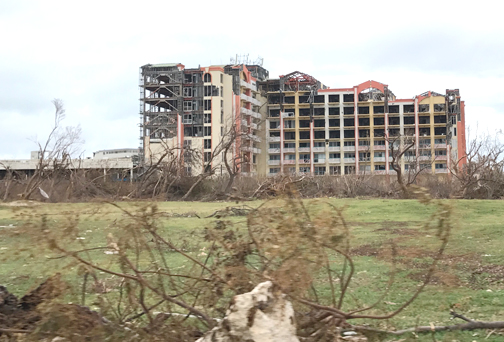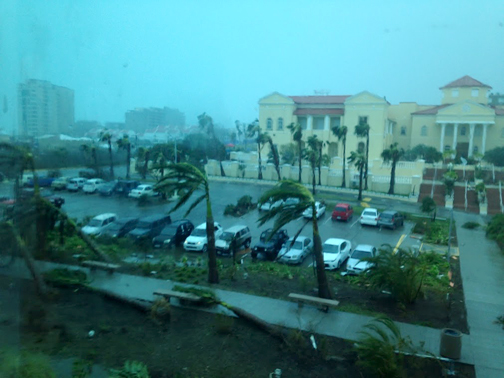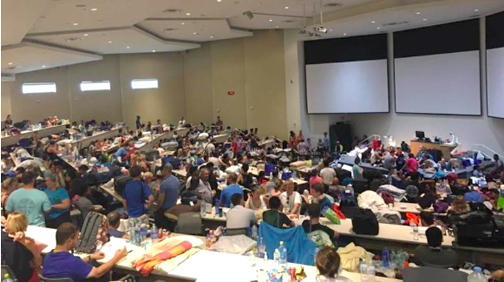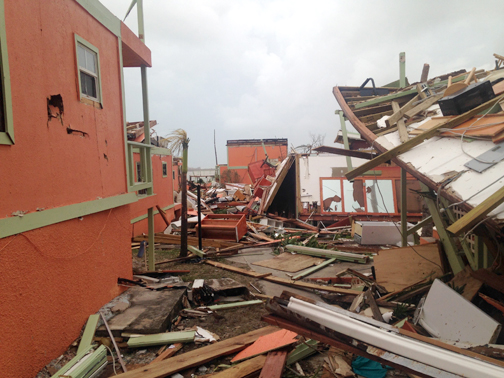
A restaurant where Christine and her friends would go before the hurricane was destroyed.
By Mary O’KEEFE
First it was Hurricane Harvey that slammed into Texas. Reports showed not only heavy wind damage but also the flooding that followed and the clean-up efforts. Then came reports of Hurricane Irma that included descriptions of complete devastation in Sint Maartin as the strong storm pummeled the 33.5 square mile island. Photos showed splintered wood where buildings used to stand and power wires downed throughout the island. Irma wasn’t finished at the Caribbean island; it hit Florida with a strong punch, followed by flooding as well.
For those in the Crescenta Valley, the devastation has been viewed through the media; however, some residents had closer encounters as parents worked to get their children home before the storm, volunteers headed east to help rebuild and a mother and daughter were caught literally in the eye of the storm.
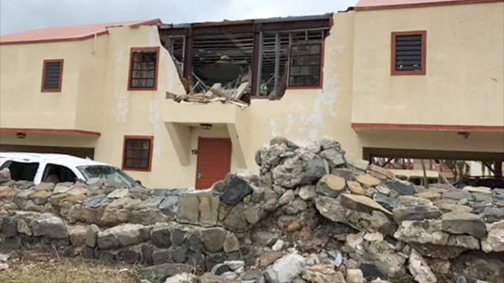
Christine Gharabetian and her mother had traveled to Sint Maartin on Aug. 30. Christine was to attend the American University of the Caribbean School of Medicine. They were attending the orientation for all first semester students.
“Before the hurricane [Irma] hit, no one thought it was going to be that strong,” Christine said of the locals she spoke with on the island.
But then the path of Hurricane Irma changed.
“In the span of 24 hours, it went up two categories,” she said.
The students and others were told to stock up on food.
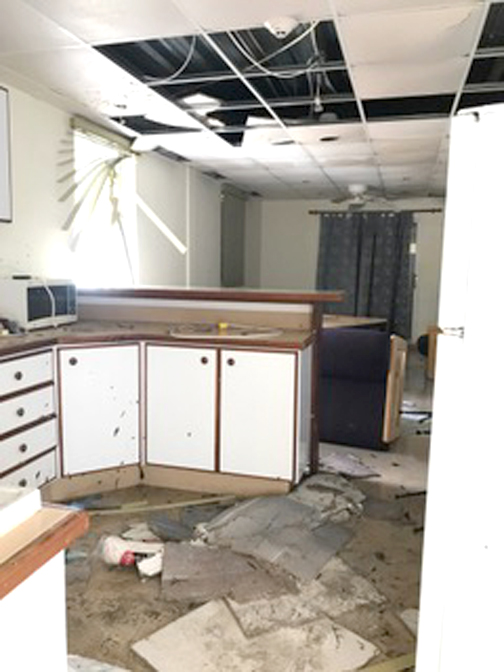
“But still it didn’t seem like a big deal. [The residents] said they had gone through a Category Four [hurricane] in the 1990s,” she said.
The school’s newest building, the auditorium, was constructed in 2011 and was built to withstand Category Five winds, which is exactly what was now heading toward the island. Christine’s dorm Christine’s dorm building was built to withstand – a Category Four.
“We [Christine and her mother] stayed in the dorms,” she said. “The problem was [my room) was facing the direction the wind was going to come.”
About 11 p.m. on Tuesday, Sept. 5 the winds began.
“At first it seemed pretty normal, like winds we have in La Crescenta,” Christine said.
Her home is high above Foothill Boulevard and she has felt some really strong winds in the past, so she and her mother were not too frightened – at least not at first
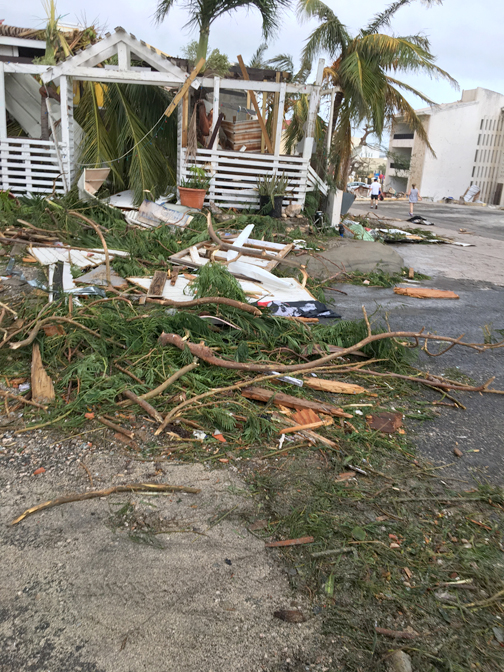
By 4 a.m. the winds grew in intensity.
“And the water came up,” she said.
Her dorm room was on the second floor. She and her mother had to put mattresses against the door in an attempt to stop the floodwaters from entering her room.
At about 5 a.m. the sustained winds were about 185 miles per hour.
“My balcony flew away,” she said. “All the service went away, the [Internet] was down, the radio went off and the electricity was on and off.”
Christine and her mom got her suitcases together and went into the bathroom, the only room without windows. She called 9-1-1 and was able to get through. The person on the other end of the phone was calm and very helpful, she said.
Christine’s dorm not only faced the wind’s direction, but was also surrounded by windows. They knew this would not be good when and if the glass started cracking. They went down the hallway while the 9-1-1 operator continued to guide them, even though the call dropped several times and she had to call back.
Christine and her mother went to a room where she knew some fellow students were, but when they opened the door the room was as damaged her own. They continued down the hallway, then some girls opened their door and told them to come in because their room had fewer windows.
The 9-1-1 operator told Christine that the eye of the hurricane was coming and at that point they would have 15 minutes of calm.
“During the eye, I got my suitcases but then all of a sudden we heard yelling outside the building. There were professors [on the sidewalk] yelling at us to get out,” she said.
At this point there was only two minutes left before the eye passed and they would be hit by the other side of the storm. They had to get to the auditorium, which normally is a five-to-seven minute walk.
As they made their way across the campus, they saw ceiling tiles that had been ripped off and, in some areas, the entire roof was gone. Electrical wires were hanging down and everyone just wanted the winds to stop. But they didn’t – at least not yet. The winds, about 170 miles per hour sustained, lasted about an hour until noon.
“The whole thing lasted 12 hours,” Christine said.
She and her mom were there with about 500 to 600 people.
“The school did a great job,” Christine said.
The school officials kept people calm and shared what supplies they had. Luckily her school is a medical university, so there was no shortage of doctors. There were not a lot of serious injuries, but a lot of cuts from broken and flying glass, and a few broken legs.
“We stayed [in the auditorium] through Wednesday night, [then] we got out when the U.S. Army came to evacuate us,” she said.
The Royal Netherlands Army supervised as the U.S. Army evacuated the U.S. citizens. Those from Canada had to wait until the school chartered planes to take them off the island.
“They evacuated us to Puerto Rico. The school really did a great job with the evacuations,” she added.
As Christine and her mom drove to the airport, she got to see the intense devastation that occurred on the island.
“We drove through downtown area, where we had dinner the night before,” she said. Everything was gone and power lines were down everywhere she looked.
“There was [some] looting,” she said. “The locals had no food or water. The school remained as a shelter. Everyone at the school has donated time and [supplies].”
Even though the experience was frightening, Christine said she and her mother met so many nice and generous people. She was impressed by how the school handled this unimaginable emergency.
For now she is waiting to continue her education, which will now be in Manchester, England. The school has arranged for her to work out of England.
“The silver lining is [I] can call all of my [classmates] really good friends,” she said.
Next week, the people who traveled to the storm-riddled areas.

